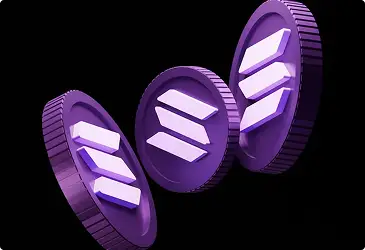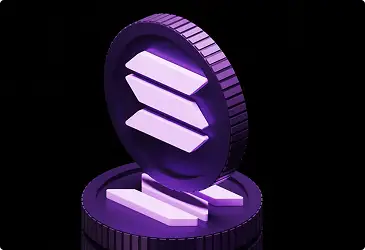
Live Ethereum
Gas Fee Tracker
Real-Time ETH Gas Prices &
Optimization Guide
Monitor real-time Ethereum gas prices, find optimal transaction windows, and save up to 60% on network costs. Free tools + comprehensive guides + zero-fee ETH trading on VTrader.
Live updates every 15 seconds
Complete Guide to
Ethereum Gas Fees
Understanding how Ethereum gas fees work is essential for cost-effective crypto trading and DeFi participation. Learn the fundamentals, calculation methods, and optimization strategies.
Ethereum gas fees are the costs paid to process transactions on theEthereum blockchain. Every action on Ethereum—sending ETH, executing smart contracts, buying NFTs, trading on DEXs—requires computational work by network validators.
What Are Gas Fees?
Gas fees compensate validators who process and verify transactions on Ethereum's Proof-of-Stake network. Think of gas as the "fuel" that powers the Ethereum network—without it, no transactions can be processed. The more complex your transaction (simple transfer vs. complex smart contract interaction), the more gas it requires.
Gas Fee Calculation Formula
(Post-EIP-1559)
Total Fee = (Base Fee + Priority Fee) × Gas Units Used
Base Fee: Network-determined minimum fee (automatically burned, not paid to validators). Adjusts dynamically based on network congestion.
Priority Fee (Tip): Optional extra payment to validators for faster transaction processing. Higher tips = faster confirmation.
Gas Units: Measure of computational complexity. Simple ETH transfer = 21,000 units. DEX swap = 50,000-150,000 units. Complex DeFi = 200,000-500,000+ units.
Real Example: Sending 1 ETH
Key Terminology Explained
Gwei
Unit of measurement for gas prices. 1 Gwei = 0.000000001 ETH. Think of it like "cents" for gas fees—makes it easier to express small amounts.
Gas Limit
Maximum gas units you're willing to spend on a transaction. Simple transfers use 21,000; complex DeFi interactions can require 500,000+ units. Unused gas is refunded.
EIP-1559
2021 Ethereum upgrade introducing predictable base fees + priority tips. Burns base fees (reducing ETH supply) and makes gas estimation more reliable.
Key Insight: Why Gas Fees Fluctuate Wildly
Gas fees spike dramatically when network demand exceeds available block space (think Black Friday shopping rush). During NFT drops, market crashes, or popular DeFi launches, thousands of users compete for limited block space by offering higher priority fees.
Pro tip: Use this tracker to find low-congestion windows—typically 2-6 AM UTC and weekends—when fees can drop 40-60%. Time your transactions strategically to save hundreds of dollars annually.
ETH Gas Fees vs Trading Fees:
Understanding the Difference
Most Ethereum traders pay TWO types of fees without realizing it. Learn the critical difference between unavoidable network costs and completely avoidable exchange commissions.
Many Ethereum traders don't realize they're paying two separate types of fees: network gas fees (unavoidable blockchain costs) and exchange trading fees (completely avoidable with Vtrader's fee structure).
Network Gas Fees
Exchange Trading Fees
Real Cost Comparison: $50,000/m Ethereum Trader
Let's compare exchange fees and total monthly costs for an active trader executing $50,000 in Ethereum transactions:
The Critical Difference: Gas Fees Stay,
Trading Fees Don't Have To
Gas fees are unavoidable network costs - you'll pay the same gas fees whether you trade on Coinbase, Kraken, Binance, or VTrader. These fees go directly to Ethereum validators who secure the blockchain.
However, trading fees are 100% avoidable on VTrader. When you stake $1,000+ worth of cryptocurrency, you unlock zero-fee trading on Ethereum and 130+ other cryptocurrencies while simultaneously earning 6-12% staking APY rewards on your staked assets.
Bottom line: Gas fees = Pay once per blockchain transaction. Trading fees = Pay on every single buy/sell order. VTrader eliminates the trading fees entirely.
Eliminate Trading Fees While
Optimizing Gas Costs
Use this gas tracker to minimize unavoidable blockchain costs, and experience Ethereum trading completely fee-free on VTrader's professional platform.
How Do You
Calculate Ethereum
Gas Fees?
Master the three-step process for estimating gas costs before executing any Ethereum transaction. Understand gas limits, current prices, and total fee calculations.
Understand Gas Limit
Gas limit is the maximum computational units you're willing to pay for your transaction.
- Simple ETH transfer: 21,000 units
- Token transfer (ERC-20): 45,000-65,000 units
- DEX swap: 100,000-150,000 units
- Complex DeFi: 200,000-500,000+ units
✅ Unused gas is automatically refunded
Check Current Gas Price
Gas Price is measured in Gwei (1 Gwei = 0.000000001 ETH). Use the live tracker at the top of this page.
💡 Higher gas price = Faster confirmation
Calculate Total Fee
Multiply Gas Limit × Gas Price to get your total fee in Gwei, then convert to ETH and USD.
Formula: Gas Fee = Gas Limit × Gas Price
Example (ETH Transfer):
• Gas Limit: 21,000 units
• Gas Price: 30 Gwei
Total: 21,000 × 30 = 630,000 Gwei
= 0.00063 ETH = ~$1.58 (at $2,500 ETH)
🎯 Use live prices above for accurate estimates
5 KEY FACTORS THAT
AFFECT ETHEREUM
GAS PRICES
Understanding what drives gas price fluctuations helps you predict fee spikes and plan your transactions strategically. These five factors explain why fees can vary 10-50x depending on network conditions.
Network Congestion
High demand = higher gas prices
When many users compete for limited block space, they bid up gas prices. Peak congestion occurs during US business hours (9 AM-5 PM EST) and major market events.
Solution: Use heat map above to find low-congestion windows
DeFi Trading Volume
DEX swaps consume 5-10x more gas than simple transfers.
During high volatility, Uniswap, Aave, and Curve see massive volume spikes, creating sustained gas price increases that can last hours or days.
Solution: Trade on VTrader CEX to avoid gas entirely
NFT Drops & Mints
Popular NFT launches create "gas wars."
Thousands of collectors competing to mint limited NFTs can spike gas prices 10-50x within minutes. These spikes are intense but typically short-lived (15-60 minutes).
Solution: Avoid minting during FOMO peaks; wait 1-2 hours for normalization
Market Volatility
Panic selling/buying = gas explosions.
Flash crashes, major news events, or whale movements trigger thousands of simultaneous transactions. Gas fees during 2021's May crash exceeded 1,000 Gwei ($200+ per transaction).
Solution: Set limit orders; avoid panic transactions during extreme volatility
Whale Transactions
Large transfers often overpay on priority fees.
All five factors are predictable and trackable. By monitoring this tracker's historical data, heat map, and real-time prices, you can identify patterns and time your transactions to save hundreds or thousands of dollars annually. For maximum savings, combine smart gas timing with
Solution: Wait 10-15 minutes after sudden spikes for price normalization
MASTER GAS PRICE PATTERNS
All five factors are predictable and trackable. By monitoring this tracker's historical data, heat map, and real-time prices, you can identify patterns and time your transactions to save hundreds or thousands of dollars annually. For maximum savings, combine smart gas timing with
VTrader's zero trading fees.ETHEREUM LAYER 2
SOLUTIONS: 90-95%
GAS SAVINGS
Layer 2 networks process transactions off Ethereum mainnet while inheriting its security. Perfect for small transactions, NFTs, gaming, and frequent DeFi trading with dramatically lower costs.
If you're frustrated by high Ethereum gas fees, Layer 2 scaling solutions offer an excellent alternative. These networks bundle hundreds of transactions together, reducing individual transaction costs by 90-95% compared to Ethereum mainnet.
Arbitrum
Optimism
Polygon
Base
Layer 2 vs Ethereum Mainnet: Decision Guide
Use Layer 2 For:
- Transactions under $1,000
- Frequent trading (multiple daily transactions)
- NFT minting and transfers
- Gaming and social applications
- Testing and experimentation
Use Ethereum Mainnet For:
- Large transfers over $10,000
- Maximum security requirements
- Long-term asset storage
- High-value NFTs and institutional assets
- When bridge costs exceed L2 savings
OR SKIP GAS FEES ENTIRELY WITH
CENTRALIZED EXCHANGE TRADING
While Layer 2 solutions dramatically reduce gas fees, you still pay $0.10-$0.80 per transaction plus bridge costs ($5-$20). VTrader offers a simpler alternative: trade Ethereum with zero gas fees AND zero trading fees by using a centralized exchange model. No bridges, no L2 complexity, no gas—just pure zero-fee trading on 150+ cryptocurrencies.
Compare VTrader Fees vs Gas CostsETHEREUM 2.0 AND THE
FUTURE OF GAS FEES
The Merge to Proof-of-Stake was just the beginning. Understanding Ethereum's roadmap helps you anticipate future gas fee reductions and plan your long-term crypto strategy.
Common Misconception About "Ethereum 2.0"
Myth: "The Merge to Proof-of-Stake reduced gas fees."
Reality: The September 2022 Merge did not reduce gas fees. It improved energy efficiency by 99.95% and made ETH deflationary, but didn't change transaction throughput. Gas fee reductions require scaling upgrades like EIP-4844 (proto-danksharding).
Ethereum's Gas Optimization Roadmap
Phase 1: The Merge (Sept 2022)
Ethereum transitioned from Proof-of-Work to Proof-of Stake.
Impact: 99.95% energy reduction, ETH became deflationary (burn rate exceeded issuance).
Gas Impact: None (unchanged throughput).
Phase 2: EIP-4844 Proto-Dank sharding (2024)
Introduces "blob transactions" for Layer 2 data storage.
Impact: L2 gas fees drop 90-95% (from $0.50 to $0.01-$0.05).
Gas Impact: Mainnet fees unchanged, but massive L2 cost reduction drives user migration to L2.
Phase 3: Full Danksharding (2025-2026)
Full implementation of data sharding.
Impact: 100,000+ transactions per second across L1 + L2.
Gas Impact: Mainnet fees could drop 50-70% as data availability improves. L2 fees approach near-zero ($0.001-$0.01).
Phase 4: State Expiry & Verkle Trees (2027+)
Advanced optimizations to reduce state size and improve node efficiency.
Impact: Further 20-40% reduction as network overhead decreases.
Goal: Sub-$0.10 mainnet transactions for simple transfers.
What This Means for You
• Short-term (2024-2025): Expect Layer 2 fees to drop dramatically with EIP-4844, making L2 the preferred choice for most users. Mainnet gas fees will remain high ($1-$20) during congestion.
• Long-term (2026+): Full danksharding could bring mainnet gas fees down to $0.10-$1.00 for simple transactions. However, for traders today, VTrader's zero-fee trading offers immediate savings without waiting for Ethereum upgrades.
FREQUENTLY ASKED
QUESTIONS ABOUT
ETHEREUM GAS FEES
Get answers to the most common questions about gas fees, optimization strategies, and cost-saving alternatives.
Why are Ethereum gas fees so high?
When are Ethereum gas fees lowest?
What's the difference between gas fees and trading fees?
How can I reduce my Ethereum gas fees?
6 proven strategies:
- 1. Time your transactions: Use the heat map above to transact during low-congestion periods (save 40-60%)
- 2. Use Layer 2 networks: Arbitrum, Optimism, Polygon offer 90-95% gas savings
- 3. Batch transactions: Combine multiple actions into one transaction when possible
- 4. Set lower gas prices: Choose "Slow" speed for non-urgent transactions
- 5. Avoid peak times: Don't transact during NFT drops, major announcements, or market crashes
- 6. Use centralized exchanges: Trade on VTrader to avoid gas fees entirely while getting zero trading fees
Will Ethereum 2.0 reduce gas fees?
Can I get a refund if my transaction fails?
TRADE ETHEREUM
FEE-FREE ON VTRADER
Stop paying gas fees AND trading fees. VTrader is the first cryptocurrency exchange offering zero trading fees to stakers—trade Ethereum and 130+ cryptocurrencies completely free while earning 6-12% APY.

Zero Trading Fees
Stake $1,000+ worth of any cryptocurrency and unlock 0% trading fees on all 130+ coins. Save $250-$3,000+ annually compared to Coinbase, Kraken, or Binance.

No Gas Fees on Trades
Trade Ethereum without paying gas fees. Only pay gas when depositing or withdrawing (use this tracker to minimize those costs). All trades execute instantly with zero blockchain fees.

Earn While You Trade
Your staked assets earn 6-12% APY while unlocking zero fees. Dual benefit: Save on trading fees + earn passive income. Withdraw your stake anytime—no lockup periods.
HOW VTRADER PAYS FOR
ITSELF (REAL NUMBERS)
ROI on $1,000 stake: 296% annually (includes trading fee savings + staking rewards)
READY TO ELIMINATE
TRADING FEES FOREVER?
Join thousands of traders who've switched to VTrader for zero-fee trading. Stake $1,000+ today and start saving immediately.

Zero-Fee Trading Guide

Staking Rewards (6-12% APY)

Complete Fee Comparison


